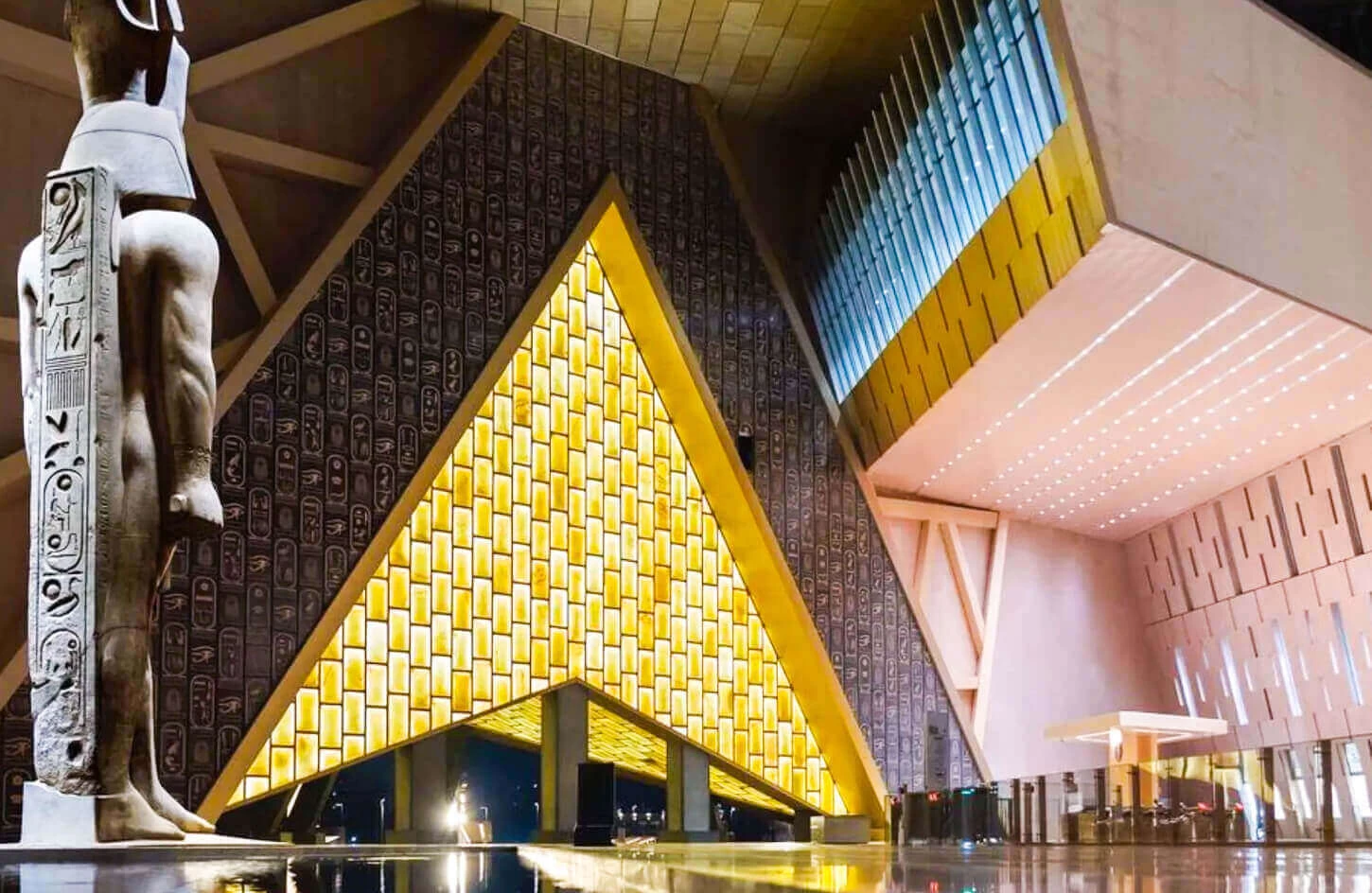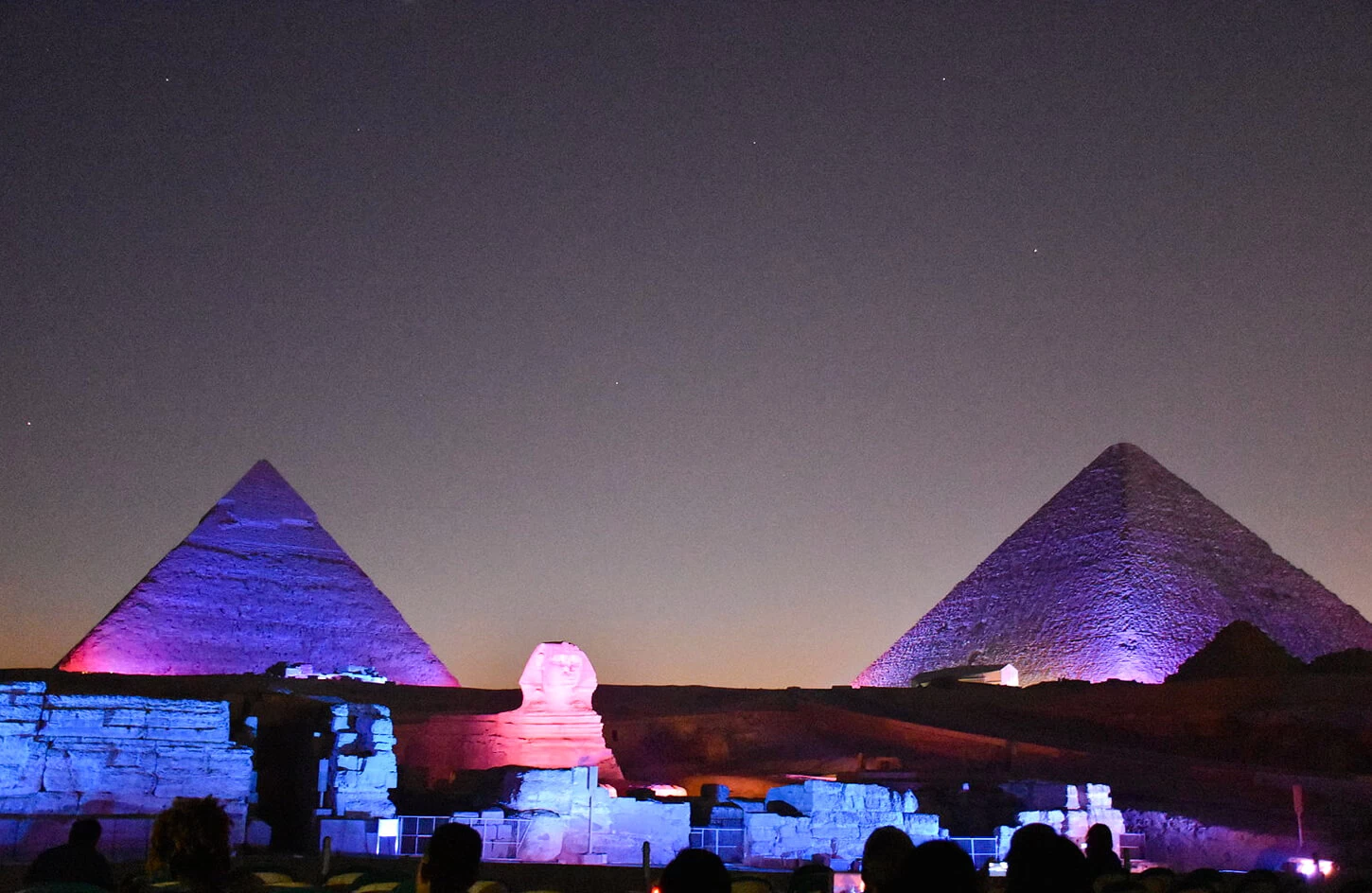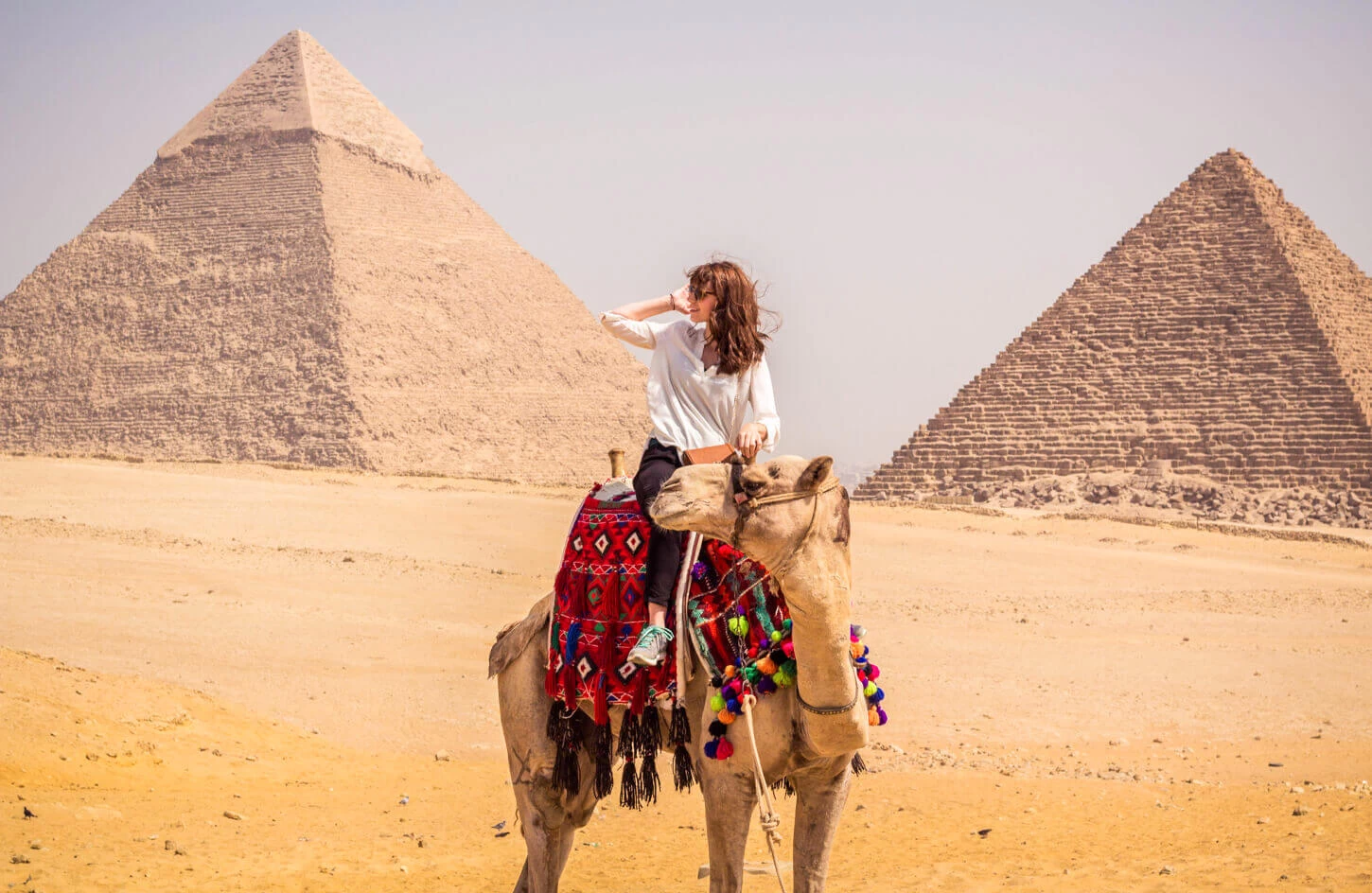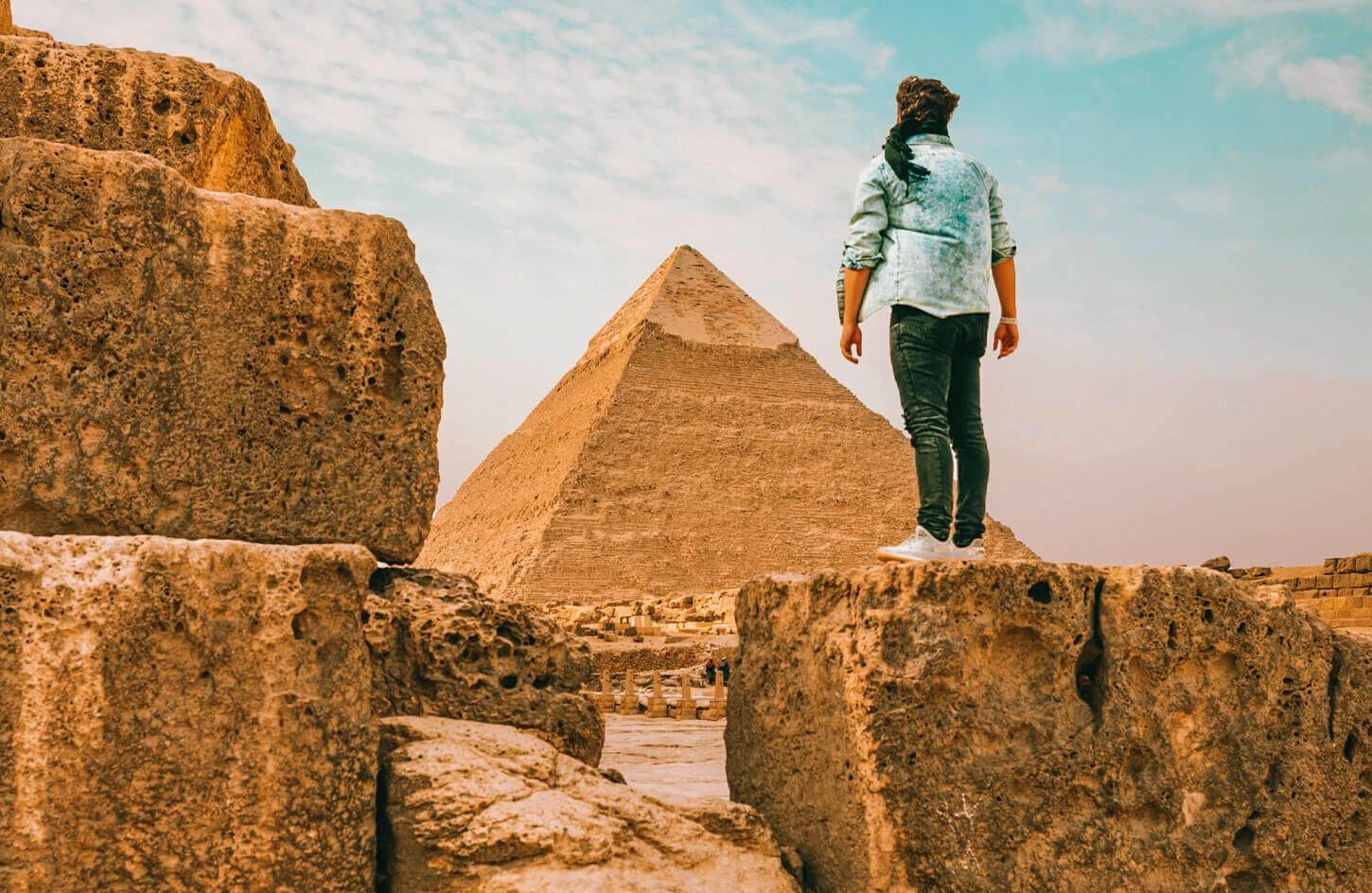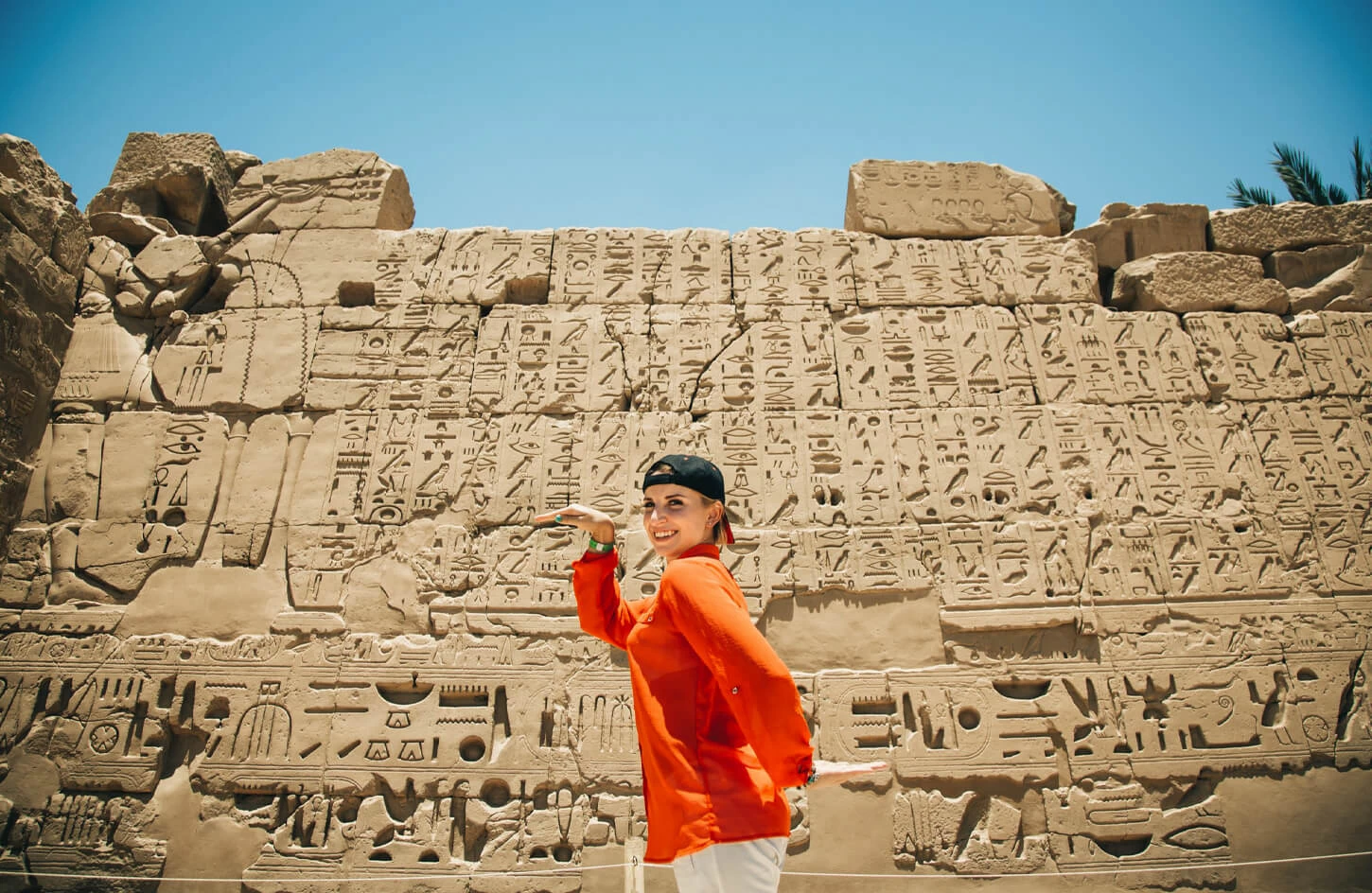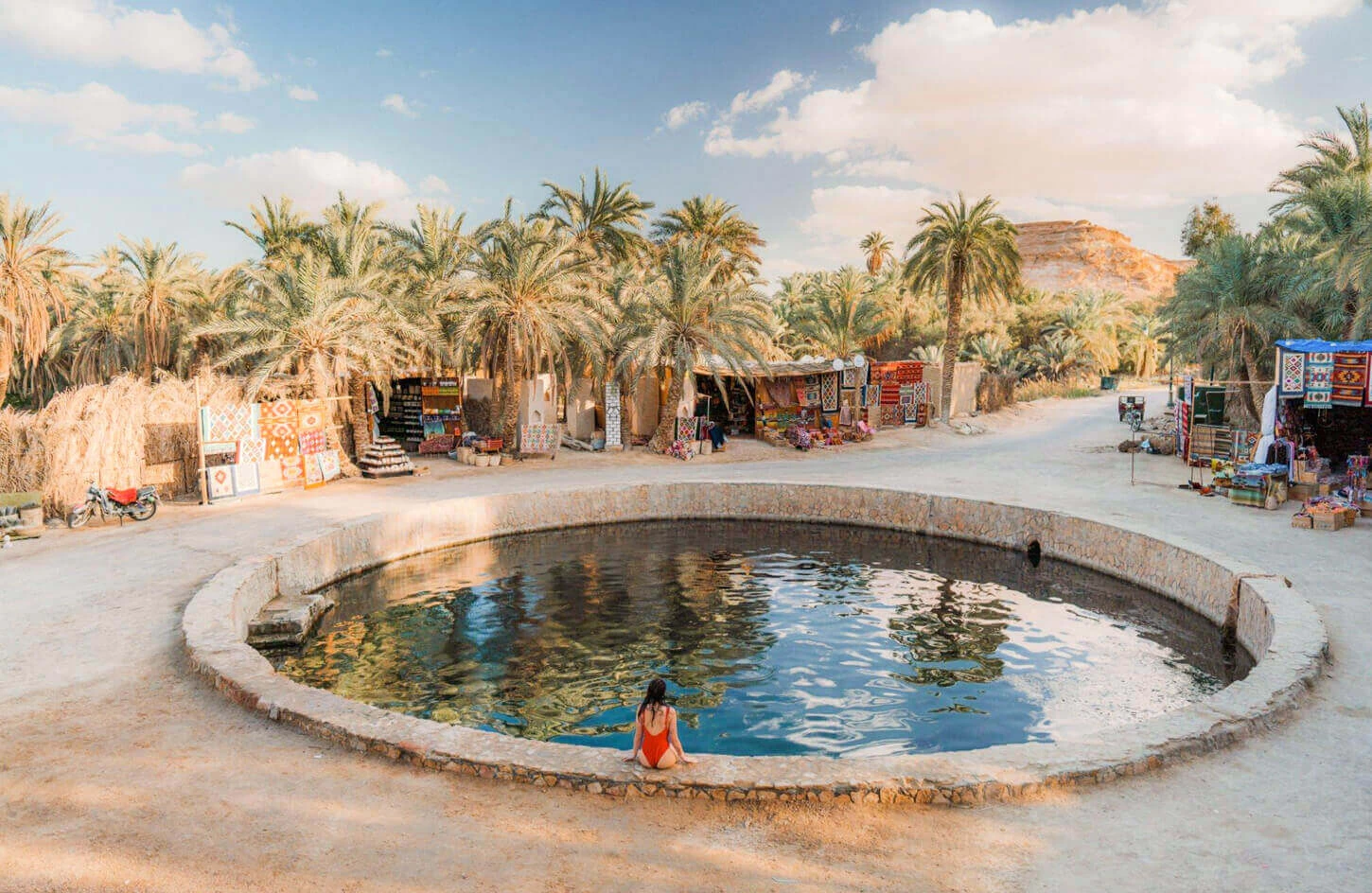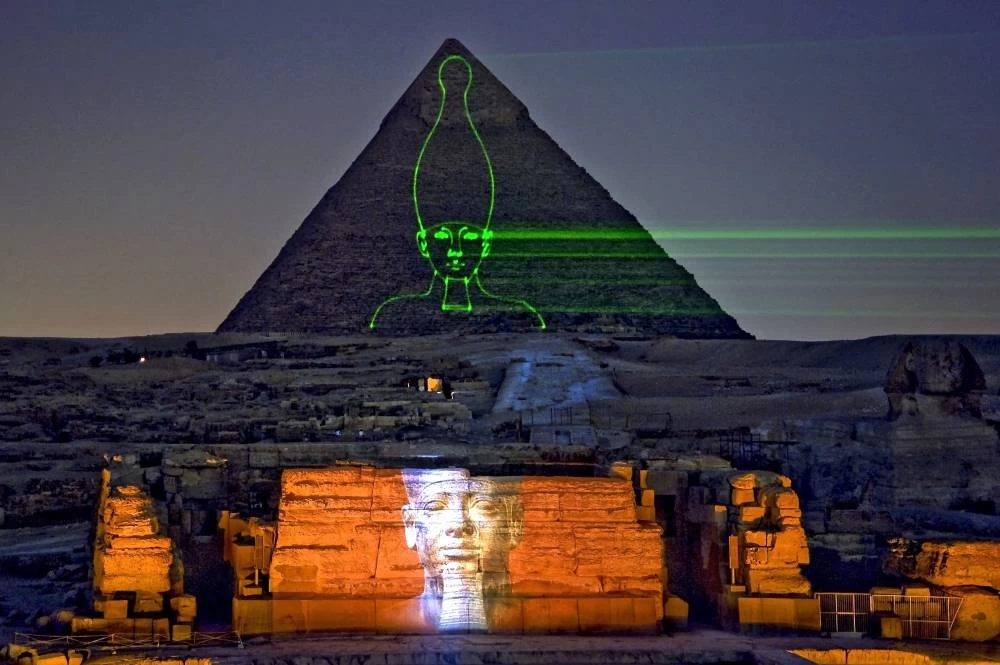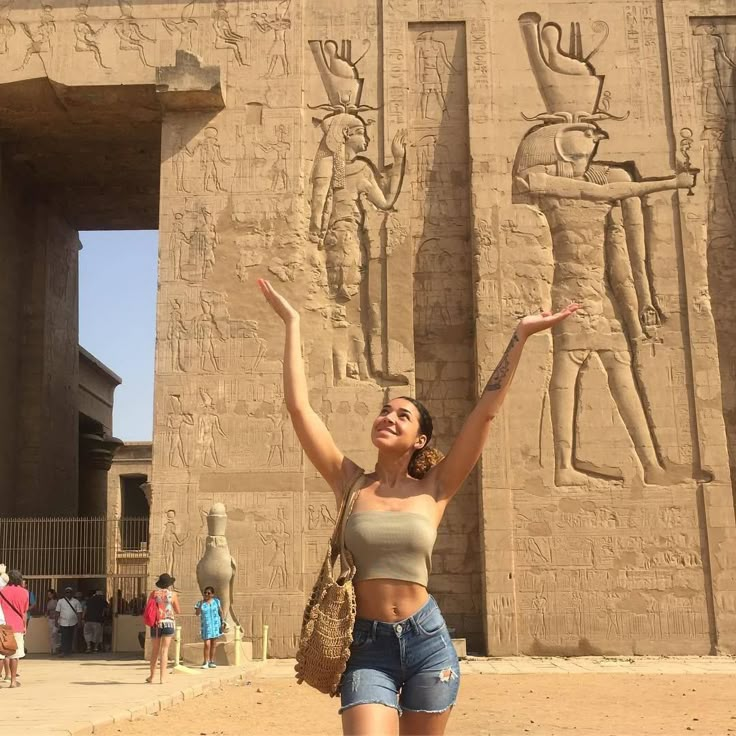The Old Kingdom of Egypt

The Old Kingdom of Egypt The Age of the Pyramids
The Kingdom of Ancient Egypt (circa 2686–2181 BC), or the Age of the Pyramids, was a period of high achievement in ancient Egyptian history. It was the period when Egypt was most powerful and culturally advanced, and where the most enduring and symbolic ancient Egyptian monuments were built: the pyramids. Pharaohs such as Djoser, Sneferu, and Khufu commissioned the construction of massive tombs to ensure their immortality in the afterlife. Djoser's Step Pyramid at Saqqara, the Curved Pyramid, and the Red Pyramid were all built during Sneferu's reign. The most famous of these, the Great Pyramids of Giza, were built during the reign of Khufu, and on your Egypt tours , you will see one of the Seven Wonders of the Ancient World. Egypt was now extremely wealthy, had a strong centralized government, and was making progress in art, construction, and politics. However, towards the end of the Old Kingdom, inter-state rivalry and external pressures led to political chaos, and the First Intermediate Period began. Despite all this, the influence of the Old Kingdom's heritage on archaeological construction and cultural experiences remains a hallmark of Egypt's early history.
Pharaohs of the Old Kingdom
The Old Kingdom of Egypt (c. 2686–2181 BCE) was a time of plenty, centralization, and monumental construction, and it spawned some of Egypt's most famous and influential pharaohs. These pharaohs are credited with creating Egypt's pyramids and much of the traditions that endured from ancient Egyptian civilization. Some of the most notable pharaohs of the Old Kingdom are mentioned below:
1. Djoser (c. 2670–2640 BCE)
Dynasty: 3rd Dynasty
Significant Contributions: Djoser is credited with commissioning the Step Pyramid at Saqqara, the first pyramid built and a momentous leap for Egyptian architecture. The Step Pyramid was constructed under architect Imhotep and remains the prototype for the smooth-sided pyramids erected subsequently. Administrative organization and wealth marked Djoser's reign with the precedent of the later pyramid-building projects.
2. Sneferu (c. 2613–2589 BCE)
Dynasty: 4th Dynasty
Major Contributions: Sneferu is traditionally credited with the invention of the familiar pyramid shape. He commissioned the construction of three large pyramids: the Bent Pyramid at Dahshur, the Red Pyramid (at Dahshur), and the Meidum Pyramid. The Bent Pyramid was an initial effort at an actual pyramid but needed to be reengineered due to structural issues. His success in constructing the Red Pyramid is considered the first true smooth-sided pyramid. Sneferu's reign was marked by war and economic prosperity.
3. Khufu (c. 2589–2566 BCE)
Dynasty: 4th Dynasty
Major Achievements: One of the most famous pharaohs of the Old Kingdom, Khufu is best known for commissioning the Great Pyramid of Giza, one of the Seven Wonders of the Ancient World. The pyramid was a giant engineering achievement and a demonstration of Egypt's power during this period. Khufu's reign is also characterized by the centralized rule he exercised over Egypt and the workforce that built his pyramid, though he is also famous for his often brutal rule.
4. Khafre (c. 2558–2532 BCE)
Dynasty: 4th Dynasty
Distinctive Achievements: Khufu's son, Khafre, is best known for his pyramid at Giza, which is slightly smaller than his father's pyramid but still a moving building. Khafre is also credited with commissioning the building of the Great Sphinx of Giza, a colossal limestone statue that represents the pharaoh in human form with a lion's body. The Sphinx is one of the most distinctive symbols of ancient Egypt.
5. Menkaure (c. 2532–2503 BCE)
Dynasty: 4th Dynasty
Significant Achievements: Menkaure is the builder of the Third Pyramid at Giza, smaller than his father Khufu's and brother Khafre's. Even though it is smaller in dimensions, Menkaure's pyramid is a grand structure and renowned for its beautiful mortuary temple and fine stonework. Menkaure's reign must have been marked by an extension of the wealth and stability of his predecessor pharaohs, though much of his reign is less documented than that of Khufu and Khafre.
6. Teti (c. 2345–2333 BCE)
Dynasty: 6th Dynasty
Significant Achievements: Teti was the first ruler of the 6th Dynasty, the beginning of the last stages of the Old Kingdom. He is renowned for his Saqqara pyramid, constructed from material looted from other pyramid cemeteries. His rule also sees some domestic strife, and his murder set a precedent for the chaos that would eventually bring down the Old Kingdom.
7. Pepi I (c. 2332–2283 BCE)
Dynasty: 6th Dynasty
Notable Achievements: Pepi I was a remarkable king who pacified Egypt after the era of instability after Teti's assassination. He expanded Egypt's frontiers and engaged in war. His pyramid at Saqqara is the biggest in the region, and his reign represents the continuation of the grand pyramid-construction tradition, though it would be his son, Pepi II, who would rule for the longest period in Egyptian history.
8. Pepi II (c. 2278–2184 BCE)
Dynasty: 6th Dynasty
Distinguished Achievements: Pepi II has the longest reign of any pharaoh, reigning for more than 90 years. His rule witnessed the steady weakening of the Old Kingdom as a result of political unrest, corruption, and erosion of centralized authority. Despite some military and diplomatic achievements during his reign, ultimately the long reign resulted in the decentralization of Egypt's power and the beginning of the First Intermediate Period, signifying the end of the Old Kingdom.
What time period was considered old kingdom in ancient Egypt?
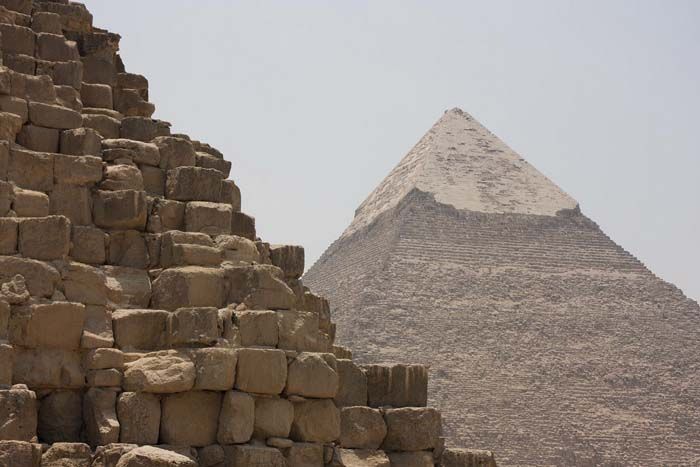
The Old Kingdom of ancient Egypt is generally estimated to have lasted from c. 2686 BCE to 2181 BCE. This period is generally referred to as the "Age of the Pyramids" because it saw the construction of Egypt's most famous pyramids, most notably the Great Pyramid of Giza. The Old Kingdom is defined by a strong central state, a rich economy, and the emergence of monumental building projects. It began during the 3rd Dynasty and ended during the 6th Dynasty, then Egypt went into a time of political instability known as the First Intermediate Period.
Facts About the Old Kingdom of Egypt
The Old Kingdom of Egypt (c. 2686–2181 BCE) was a period of unmatched affluence, monumental building, and intellectual development. Frequently also called the "Age of the Pyramids," it was the golden era of Egyptian ancient history. The following are some fascinating facts about the Old Kingdom:
1. The Rise of the Pyramid Builders
The Old Kingdom is most renowned for the building of pyramids, the Great Pyramid of Giza being the prime example. They were built as tombs for the pharaohs, pointing out their divine powers and immortality.
Djoser's Step Pyramid, built by Imhotep in the 3rd Dynasty, is the world's oldest pyramid and was an architectural leap of monumental proportions.
2. Strong Centralized Government
The Old Kingdom has a highly centralized and autocratic government in which the pharaoh acts both as political ruler and earthly incarnation of the gods.
The pharaoh was very rich and had control over the clergy, the warriors, and working class, which were required in the construction of gigantic projects like the pyramids.
3. The Importance of the Afterlife
Ancient Egyptians were quite firm in their belief systems regarding the afterlife.Pharaohs and elites built grand tombs where their belongings and bodies would be buried to live with the gods forever.
Mummification was first done in the Old Kingdom to keep the bodies for the afterlife.
4. Great Pharaohs
Djoser (3rd Dynasty) was responsible for the start of the first pyramid, and that was the Step Pyramid at Saqqara.
Sneferu (4th Dynasty) is responsible for pyramid building with his Bent Pyramid and Red Pyramid.
Khufu (4th Dynasty), the constructor of the Great Pyramid of Giza, one of the Seven Wonders of the Ancient World.
Khafre (4th Dynasty) built the second pyramid at Giza and the Great Sphinx.
Menkaure (4th Dynasty) built the third pyramid at Giza, although smaller than the others'.
5. Architectural and Engineering Achievements
The Old Kingdom saw wonderful advances in architecture and engineering with the construction of pyramids and mortuary temples. The construction and creation of such huge monuments suggested sophisticated planning as well as availability of plenty of trained and skilled labor.
The Step Pyramid is regarded with respect as Egypt's first giant stone building project and served as a model for subsequent pyramid projects.
6. Social Structure and Labor
Egypt was a highly structured society with an evident hierarchy led by the pharaoh, priests, government employees, artisans, and farmers.
While one can assume slaves built the pyramids, most workers were skilled artisans, artisans, and migrant laborers who regularly worked on governmental projects, particularly during Nile's seasonal flooding when the ground couldn't be tilled.
7. Religious Beliefs
The pharaoh was a god-king, most often identified with the gods, especially Ra, the sun god.
Temples and cults for gods like Ra, Osiris, Horus, and Isis were an essential feature of the Old Kingdom. Great temples were constructed, and ceremonial offering of gifts to the gods was the way of the day during this period.
8. Decline and the First Intermediate Period
The Old Kingdom collapsed around 2181 BCE, largely due to internal conflict, decentralization of power, and economic issues.
Collapse of the Old Kingdom led to the First Intermediate Period, a time of political dissolution, economic depression, and the decline of royal authority.
9. Art and Culture
Old Kingdom is renowned for its artworks, particularly in the making of statues, tombs paintings, and reliefs that covered the tombs of pharaohs and nobles.
These works of art primarily depicted the afterlife and everyday life of the royal class, testifying to Egypt's great level of craftsmanship and symbolic use of art.
10. Writing and Administration
Hieroglyphic writing was widely used during the Old Kingdom, particularly in religious literature, tomb inscriptions, and administrative documents.
The period saw the rise of a more organized system of governance, with scribes playing a central role in recording and the management of resources for extensive undertakings.
How the Old Kingdom Shaped Ancient Egyptian Civilization
The Old Kingdom (approx. 2686–2181 BCE) played a significant role in outlining the trajectory of ancient Egyptian civilization and setting up the premises for much of the cultural, religious, and social conventions that would define Egypt for millennia to follow. Below are some main ways in which the Old Kingdom affected ancient Egyptian civilization:
1. Centralization of Power and Government
During the Old Kingdom, Egypt experienced a highly centralized state under the pharaoh, who was not only the political head but a divine representative of the gods. Centralization of authority enabled the efficient administration and management of resources, making it possible to embark on such massive projects as the construction of the pyramids.
The uncheckable power of the pharaoh gave a definite pecking order, which had the king first, followed by the priests, officials, and the common man. This pattern governed Egyptian administration for centuries, with pharaohs exercising ultimate authority throughout Egypt's history.
2. Monumental Architecture and Engineering
The Old Kingdom is also commonly known as the "Age of the Pyramids." The construction of the Great Pyramids of Giza, the Step Pyramid of Djoser, and other pyramids of monumental proportions was a leap of monumental proportions in engineering and architectural ability.
These enormous buildings were not only representations of the divine power of the pharaohs but were also demonstrations of the advanced Egyptian comprehension of engineering, mathematics, and labor management. The long-lasting existence of the pyramids remains an acknowledgment of Egypt's architectural legacy.
The development of the pyramid shape as the final tomb architecture gave rise to all that followed in subsequent Egyptian architectural styles and dictated the development of later monumental tombs and temples.
3. Religious Influence
The Old Kingdom solidified religion as being at the fore of daily life, where the pharaoh was the divine ruler who was the mediator between humans and the gods. Temples being constructed and massive temples directly reflected the religious power of the pharaoh.
The belief in the afterlife was strongly rooted in Egyptian society, with burials not only for pharaohs but even for officials and nobles, establishing the belief of immortality and rightful burial rates.
The godly status of gods such as Ra (sun god), Osiris (god of the afterlife), and Horus (god of kingship) was a component of Egyptian religion and stretched through Egyptian history.
4. Art and Culture
The Old Kingdom was a period of great artistic refinement. Pharaohs' and the rich's tombs were adorned with paintings, sculptures, and reliefs that depicted the society's religion, daily life, and ideas of the afterlife.
Artistic techniques, such as stone carving and wall painting, became highly refined and established the style of Egyptian art for centuries.
Egyptian art iconography, such as depictions of the pharaohs, the gods, and scenes of life and death, became standardized, allowing a great amount of continuity in Egyptian society.
5. Writing and Administration Emerged
The Old Kingdom witnessed the further evolution of hieroglyphic writing, which was now necessary for religious scripts, royal edicts, and administrative duties. This early writing enabled recording the history, laws, and religious ceremonies of Egypt for posterity.
Scribes were called for in government and enabled resource, tax, and large scale building works management effectively. Also, the introduction of a system of writing provided monumental building works construction more arranged on the initiative of the labour workforce.
6. Social Structure and Labour
The Old Kingdom solidified the idea of a strict social hierarchy, with the pharaoh at the top, then priests, officials, artisans, and farmers. This stratified system was maintained throughout Egyptian history.
Labor management became necessary, especially for large-scale construction projects like the pyramids. It is now believed that skilled workers, not slaves, were employed for these tasks, seasonally when the Nile floodwaters made agriculture impossible.
This labor union guaranteed the success of the massive projects of the Old Kingdom and demonstrated the efficacy and power of Egypt's central government.
7. Expansion and Trade
Old Kingdom was characterized by an expansion of commercial networks across the Mediterranean and into regions like the Levant, Nubia, and the Sinai Peninsula. Via the commercial channels came rare goods such as copper, lapis lazuli, and wood, utilized in building and decoration.
Success in trade was the motor of Egypt's economy and allowed resources to carry out the colossal building projects of the Old Kingdom, including the pyramids.
8. Legacy of the Old Kingdom
The social and cultural foundations established during the Old Kingdom provided the basis for Egyptian civilization. The art, religion, and architecture of the Old Kingdom established the pattern for later times, including the Middle Kingdom, New Kingdom, and thereafter.
While the Old Kingdom collapsed into the First Intermediate Period, its influence in architectural achievement (e.g., the pyramids), religious practice (e.g., the importance of the afterlife), and social organization (e.g., the divine kingship of the pharaoh) lasted for centuries to shape Egypt.
The Decline of the Old Kingdom
The disintegration of the Old Kingdom (c. 2686–2181 BCE) ended the era of stability, prosperity, and monumental construction in ancient Egypt. This disintegration created the First Intermediate Period, a period of political decentralization and instability. The disintegration of the Old Kingdom was caused by the following factors:
1. Decentralization of authority
One of the primary reasons for the collapse of the Old Kingdom was the decrease of power of the pharaoh. The pharaoh's central government started weakening over time, and provincial leaders, or nomarchs, became more powerful in the provinces. Provincial leaders grew more independent and weakened the pharaoh's centralized authority.
Decentralization of power created tensions between provincial leaders and undermined political cohesion of Egypt, rendered the state vulnerable to internal strife.
2. Economic Downturn
The great state monumentality, particularly pyramid building, put an immense burden on the treasury. Though the Old Kingdom was discovered to be a profitable period, financing the enormous royal estates, pyramids, and other monuments depleted Egypt's economy.
Agricultural hardship was compounded by bad harvests, possible inflation, and a nascent foreign trade dependence that grew more problematic in the face of political instability.
3. Climate Change and Famine
There are some speculations that climatic alterations, like a change in the flooding pattern of the Nile River, were the causes of agricultural difficulties. The Nile's flood each year was necessary for irrigation and agriculture, but in case the floods were less strong than normal, then it would cause famine and widespread scarcity of food.
Prolonged drought or poor flooding would have strangled the economy and robbed Egypt of its capacity to finance its enormous pyramid-construction projects and other state enterprises, further discrediting the pharaohs in office.
4. Decline of the Pharaohs
As the authority of the pharaoh declined, monarchic positions reduced centralization. The reign of Pepi II for more than 90 years makes him typically considered to be the final great pharaoh of the Old Kingdom, though his longevity as ruler went in tandem with ultimate deterioration. Perhaps his very length of tenure reduced the system of politics to weariness, while his own passing contributed toward degeneration in royalty.
The royal court increasingly came to be disconnected from reality, and the influential roles of the state were held by officials and nobles who had private agendas of their own, further weakening the internal strength of the kingdom.
5. Internal Disunity and Political Unrest
High-level disorder caused by corruption and mismanagement was also one of the factors through which Egypt was weakened.Rising power at the local levels and decreasing efficiency in central governance brought internal disquiet and provincial tensions.
There was also administrative disorganization, which reduced the ability to raise taxes, control resources, and sustain grand-scale building works. These difficulties were most prominently displayed during the second half of the 6th Dynasty and the reign of Pepi II, whose extensive reign exposed Egypt to fragmentation.
6. Collapse of the Pyramids as Symbols of Power
The massive sums of resources invested in the building of pyramids, particularly the Great Pyramid of Giza, strained the economy. The glory of the pyramids in later Old Kingdom tombs declined, both in the waning power of the pharaohs and the dispersal of the centralized power required to fund such monumental ventures.
7. Transition to the First Intermediate Period
The coming together of all these factors caused the collapse of the Old Kingdom and the institution of the First Intermediate Period (c. 2181–2055 BCE). Egypt was split into two competing regions: the Herakleopolitan Dynasty in the north and the Theban Dynasty in the south. This was a time of political disintegration, internal conflict, and economic hardship, with local leaders vying for control over Egypt.
The lack of stable, centralized administration and general collapse in the First Intermediate Period brought into sharp focus the collapse of the power structures which had defined the Old Kingdom.
Old Kingdom pyramids
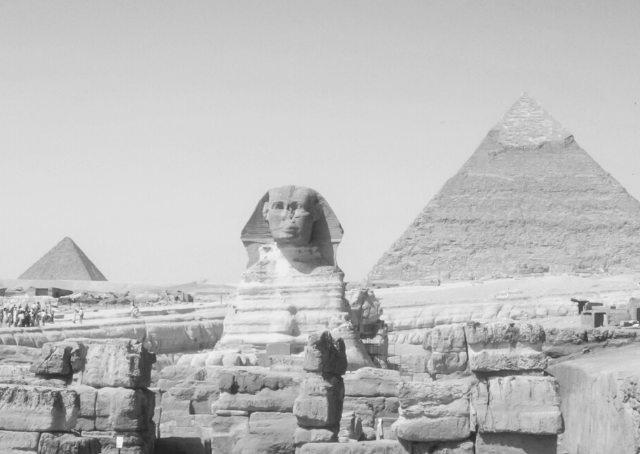
The ancient Egyptian Old Kingdom (c. 2686–2181 BCE) has also been called the "Age of the Pyramids" since it was during this period that some of Egypt's most famous pyramids were constructed. The pyramids were massive tombs for the pharaohs, and they were designed to ensure the safe entry of the pharaohs into the afterlife. Some of the most prominent pyramids that were built during the Old Kingdom are listed below:
1. The Step Pyramid of Djoser (c. 2670 BCE)
Location: Saqqara
Pharaoh: Djoser (3rd Dynasty)
The Step Pyramid is the first big stone structure in Egypt and the first pyramid. It was planned by the architect Imhotep and started as a mastaba (a flat-roofed, rectangular structure) but evolved into a six-step pyramid. This pyramid marks the transition from the earlier tombs to the great pyramids later in the Old Kingdom.
2. The Bent Pyramid (c. 2600 BCE)
Location: Dahshur
Pharaoh: Sneferu (4th Dynasty)
The Bent Pyramid was a landmark in pyramid construction. It was originally built with an incline but was modified halfway through, thus acquiring the "bent" shape. It is remarkable due to this modification in structure. The pyramid is well preserved and is one of the most significant in studying the evolution of pyramid design.
3. The Red Pyramid (c. 2580 BCE)
Location: Dahshur
Pharaoh: Sneferu (4th Dynasty)
Red Pyramid is the world's first smoothly sided pyramid and one of Egypt's largest. Its name is taken from the reddish limestone of which it was constructed. It is a milestone in pyramid design, and when its construction completed establishing the style for all subsequent pyramid construction until the Great Pyramid at Giza.
4. The Great Pyramid of Giza (c. 2580–2560 BCE)
Location: Giza
Pharaoh: Khufu (4th Dynasty)
The Great Pyramid is Egypt's largest and most famous pyramid. It was originally 146 meters (481 feet) high, but it stands only 138 meters (455 feet) tall now because the outer casing stones were lost. The Great Pyramid was an incredible feat of engineering, and it remained the world's tallest man-made structure for over 3,800 years.
5. The Pyramid of Khafre (c. 2570 BCE)
Location: Giza
Pharaoh: Khafre (4th Dynasty)
The Pyramid of Khafre is the second pyramid at Giza and is slightly smaller than the Great Pyramid. It still retains some of its original casing stones at the top, giving tourists an idea of what the pyramids looked like when they were first built. Khafre's pyramid is also associated with the great Great Sphinx of Giza, which is believed to represent Khafre himself.
6. The Pyramid of Menkaure (c. 2490 BCE)
Location: Giza
Pharaoh: Menkaure (4th Dynasty)
The smallest of the three Giza pyramids, Menkaure's pyramid is still an impressive structure. It stands about 65 meters (213 feet) tall, overshadowed by the Great Pyramid and the Pyramid of Khafre. Menkaure's pyramid was made from a combination of limestone and granite.
Conclusion
The Old Kingdom (c. 2686-2181 BC) is best known for building the Giza Pyramids history, the legendary Pyramids of the Old Kingdom. The pyramids, built during the Fourth Dynasty, were the royal tombs of the pharaohs that symbolized the pharaohs' power and association with the gods. Egyptian dynasties during this period established a highly organized society where the pharaoh was both political ruler and a god. Society in ancient Egypt was highly centered on religious life, and pyramids were crucial to the pharaoh's journey to the afterlife. Old Kingdom architectural and cultural developments set the foundation for Egypt's lasting legacy.

